 |
 |
 |
|
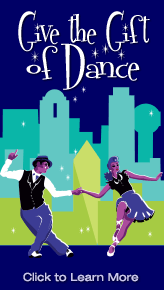 |
|
Click any of the following links to read about each dance:
Cha Cha |
Charleston |
Foxtrot |
Merengue |
Salsa |
Samba |
Swing/Lindy Hop |
Rumba |
Tango |
Waltz
Types of Dances
Cha Cha
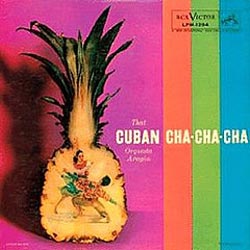
Cha Cha is great fun and is danced to medium tempo music with a Latin beat that is a bit slower than Salsa but faster than Rumba. It also works well with certain club music and Hip Hop of the past few decades. You can learn Cha Cha in both the Latin Ballroom Group Dance Class and Ballroom Sampler Group Dance Class.
History of Cha Cha
Like Mambo and Rumba, Cha Cha originated in Cuba. Cuban Mambo dancers would sometimes use a triple hip movement in their Mambo, which evolved into a triple-step and thus Cha Cha was born. Introduced in the US in the 1950s, Cha Cha rapidly gained popularity in a Desi Arnaz primed-America. (Unfamiliar with Desi's cultural contributions? Please check out this brilliant Babalu from I Love Lucy.)
Click to listen to Cha Cha music.
Charleston
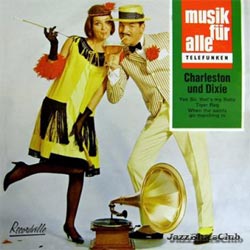
The modern Charleston is danced in many permutations: solo, with a partner, in groups of solo dancers and in groups of couples. The basic step allows for a vast range of variations and improvisation. For instance, when dancing the Charleston with a partner, you can dance side by side, facing your partner or in tandem with your partner.
Both the 1920s and Swinging Charleston styles are popular today, though swinging Charleston is more commonly integrated into Lindy Hop dancing. You can learn the Charleston in the regular Monday night East Coast Swing/Lindy Hop Group Dance Class.
History of Charleston
Just like the song says, the Charleston is named after a city in South Carolina. While the Charleston developed in African-American communities in the United States, it became a popular dance craze in the wider international community in the 1920s. Despite its African-American origins, Charleston is most frequently associated with flappers and speakeasies. Prior to the 30s the music for the Charleston was ragtime jazz, in quick 4/4 time with syncopated rhythms. Charleston was one of the dances from which Lindy Hop developed in the 1930s. In this later Charleston form, the hot jazz timing of the 1920s Charleston was adapted to suit the swing jazz music of the 30s and 40s.
Click to listen to Charleston music.
Foxtrot
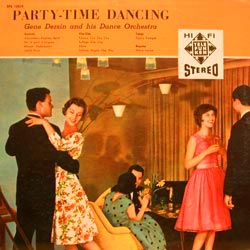
Fox Trot is a perfect dance for parties and weddings. It is danced to the great Jazz Standards (think Sinatra). It uses songs in 4/4 rhythm, which are the bulk of songs you hear today. Fox Trot can be romantic and casual, or danced more formally depending on your partner, mood and the music.
It is traditionally danced as a traveling dance (meaning couples move around the dance floor). However, if the floor is too crowded or small, the Fox Trot can easily be adapted so you can do the dance without traveling.
Our Ballroom Sampler Group Dance Class covers the basics of Fox Trot. You don't need a partner for this group dance class and you will also learn a sampling of the other major dances.
History of Foxtrot
Fox Trot is commonly attributed to Harry Fox, who was a Vaudeville performer active in New York in the 1910s and became a nation-wide craze thanks to a number of popular dancers of the time including Vernon Castle and Oscar Duryea. The Fox Trot combines slow and quick steps which allow for a great variety in the steps and was originally danced to ragtime music.
Click to listen to Fox Trot music.
Merengue
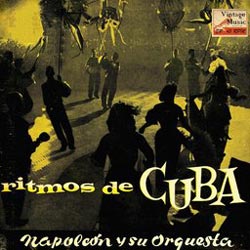
Merengue is the easiest dance in the world to learn and Merengue music can be heard in Latin nightclubs around the world. It is a one-step, meaning you take one step per beat, and while the music is upbeat, the moves can be executed without a rush.
Merengue is offered in both the Ballroom Sampler Group Dance Class and the Latin Ballroom Group Dance Class.
History of Merengue
Merengue is attributed to slaves in Haiti and the Dominican Republic and dates back to the late 1800s. The dance is characterized by a sort of clipped hip movement. As to the origins of the style of movement there are many varying histories. One story goes that a military captain was very fond of the dance and when he returned from battle wounded, he had a limp accounting for the unique hip movements used in the dance. Another story is that a king was born with a birth defect which caused a limp and in order to make him feel more comfortable, his court mimicked his movements. Most likely, the slaves working the cane fields had to wear shackles, which made them move with shortened steps, but who knows?
Click to listen to Merengue music.
Rumba
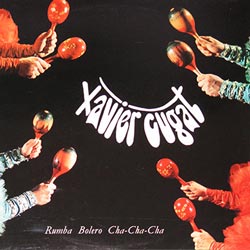
Rumba is the most romantic of the Latin dances as well as one of the most popular ballroom dances. The slower tempo of Rumba makes it easy to learn, but the music is exciting enough as to prevent it from feeling like the valium shuffle.
This dance is so popular, it is offered in both the Ballroom Sampler Group Dance Class and Latin Ballroom Group Dance Class.
History of Rumba
Rumba originated in Cuba and was introduced in New York City in the early 1900s. At that time in Cuba, couples were enjoying a dance called Son. When it was brought to New York City, the name was changed to Rumba. In Cuba, the name Rumba was associated with a faster dance, not the slow, smooth dance presently connected to the name in the United States. The Rumba danced in the ballrooms of America is a direct descendant of Son, and the original Cuban Rumba morphed into Mambo and then Salsa.
Click to listen to Rumba music.
Salsa
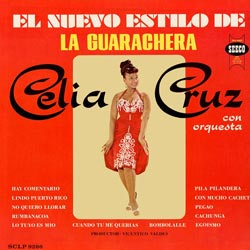
Salsa is one of the hottest dances around. It is danced to fast music that can be found at numerous Latin night clubs around town. You can learn Salsa in the Latin Ballroom Group Dance Class or the Ballroom Sampler Group Dance Class.
History of Salsa
Like many of the social dances alive today, Salsa's roots can be traced to a blending of European and African musical and dance traditions which occurred as a result of European descendants importing African slaves to the New World. Salsa's history reads like the family tree of Cuban music, Rumba gave birth to Mambo, which in turn gave birth to Salsa.
There is still much dispute about using the word Salsa verses Mambo to describe the music and dance. Tito Puente, one of the most famous Latin band leaders alive, is often quoted as saying, "Salsa is what you eat."
Click to listen to Salsa music.
Samba
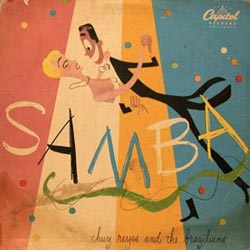
Samba is a very energetic dance, danced to lively music. The Samba can whip you into shape like no other.
You can learn the Samba in the Ballroom Sampler Group Dance Class and in the Intermediate Latin Ballroom Group Dance Class.
History of Samba
Like many dances, as they travel the world and as time goes by, the dances change from their original form. The Samba's roots lie in Brazil. Like Jazz, the rhythms and dance of the African slaves and the Portuguese colonialists came together to create a unique and novel music and dance.
The first Brazilian dance imported to the United States around 1910 was the Maxixe (also known as the Brazilian Tango). Then, around 1917 the Samba was introduced and became popular in the 1940s.
Click to listen to Samba music.
Swing/Lindy Hop
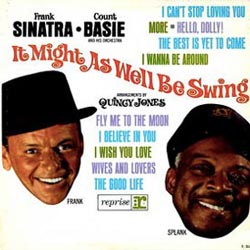
Swing is one of the handiest dances to know. Swing is an upbeat dance and can be danced to Rock and Roll, Jazz, R&B, Soul and more. Swing is characterized by a frequent changes in partner position from closed (when partners are side-by-side with the leader's arm around the follow) to open (when partners are apart and only connected by a hand-hold). It developed hand-in-hand with Jazz music beginning in the 1920s and has been evolving ever since.
There are many different styles of Swing dancing. The most prevalent types of Swing are East Coast, Lindy Hop and West Coast. Additionally, there are region styles and dances such as Balboa, Push, Carolina Shag, Jitterbug, Swing Out, Hand Dancing and more.
Brief descriptions of the variety of Swing dances
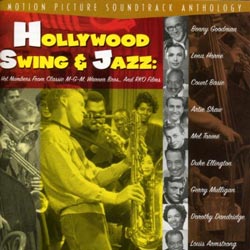
Lindy Hop
Lindy Hop can be danced in a wild fashion, or can be cool and sophisticated depending on your mood of the moment. The flips and jumps often associated with this dance are featured in the performance style of the dance, as opposed to the social style we teach in our Lindy Hop Class.
You can learn the Lindy Hop in the regular Monday night East Coast Swing/Lindy Hop Group Dance Class. Lindy Hop Classes are offered for beginner, intermediate and advanced levels.
History of Lindy Hop
Lindy Hop is the granddaddy of all of the Swing dances. It started in the huge ballrooms in Harlem in the 1920s, 30s and 40s. Lindy Hop developed hand-in-hand with the music of the time, Jazz. Lindy Hop's roots stretch deep into the past and include African rhythms and movements and European partner dancing. Charleston also was a huge influence and many Charleston moves are incorporated into Lindy.
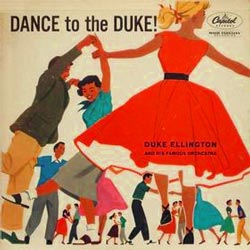
Of all of the social dances, Lindy Hop offers dancers the greatest amount of room for improvisation and personal expression. Because of the break-away steps (where partners break the connection and are separated by all but a single handhold), Lindy Hop was revolutionary in the freedom it allowed both partners to improvise and do different movements. Previously, partner dances, such as Waltz and Fox Trot, were danced only in closed position, so the break-away steps gave Lindy Hop a dramatically different look.
Norma Miller, an early innovator of the dance is still alive and teaching. Along with the late (and very great) Frankie Manning, she was a member of Whitey's Lindy Hoppers, the premier Lindy Hop performance troupe, and featured in films of the era including A Day at the Races, Hot Chocolates and Hellzapoppin'.
Lindy Hop and Jazz quickly spread throughout the United States and as it did different styles and varieties of Swing dancing have developed.
West Coast Swing
West Coast Swing was derived directly from Lindy Hop and is typically danced to R&B. As Lindy Hop was exported from the ballrooms of Harlem to the West Coast a different smoother style became popular. West Coast Swing developed from as early as the late 1930s on the dance floors, dance studios began teaching the dance in the 1950s.
West Coast Swing is a slotted dance, meaning couples have a linear space (or slot) on the dance floor and the followers move to and away from their partners along a stationary line (whereas Lindy Hop is considered wilder because it doesn't stay in a clearly defined spot on the dance floor).
East Coast Swing
East Coast Swing was developed In the 1950s by dance studios which drew largely on Lindy Hop. It is characterized by 6-count moves and is danced to Big Band, Jazz and Rock and Roll.
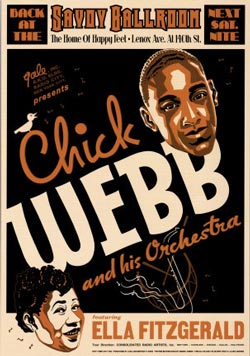
Roots of Lindy Hop
At the Rhythm Room, we are true to the roots of Lindy Hop, which incorporated 6 and 8-count moves, so we do not separate Lindy Hop from East Coast Swing. In our Monday Night Beginning Swing/Lindy Hop Group Class you will learn the 6-count basic, 8-count basic (the Swing Out) and the basics of Charleston.
In essence, you will learn East Coast Swing and Lindy Hop. Dancers learn to combine all three rhythms as they progress to our Intermediate Swing Group Class or the Intermediate/Advanced Group Class.
For a real treat from the old days check out this classic dance sequence from the movie Hellzapoppin' (1941). Whitey's Lindy Hoppers are (in order of appearance) William Downes and Frances "Mickey" Jones, Billy Ricker and Norma Miller, Al Minns and Willa Mae Ricker, Frankie Manning and Ann Johnson. Slim Galliard, Slam Stewart and members perform the Hellzapoppin' Jam.
Click to listen to Swing music.
Tango
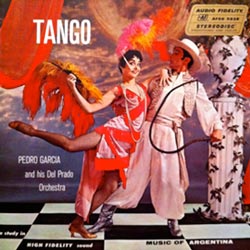
The roots of all styles of Tango lie in Argentina. Argentine tango is a social dance and a musical genre that originated in Argentina and Uruguay. Argentine tango consists of a variety of styles that developed in different regions and eras, and in response to the crowding of the venue and even the fashions in clothing. There are also records of 18th and early 19th century tango styles in Cuba and Spain.
Present day ballroom tango is divided into two disciplines: American Style and International Style. Both styles share a closed dance position, but the American style allows its practitioners to separate from closed position to execute open moves, like underarm turns, alternate hand holds, dancing apart, and side-by-side choreography.
Tango is essentially walking with a partner and the music. Musicality (i.e. dancing appropriately to the emotion and speed of a tango) is an extremely important element of dancing tango. Tango dance and tango music is dramatic and earthy. Stylistically, dancers generally keep their feet close to the floor as they walk, the ankles and knees brushing as one leg passes the other. If you love Tango music, you will love to dance the Tango.
History of Tango
The evolutionary path of American style tango traveled from Argentina to the United States, when it was popularized by silent film star Rudolph Valentino in 1921, who demonstrated a highly stylized form of Argentine tango in The Four Horsemen of the Apocalypse. As a result, the Hollywood style steps mixed in with other social dance steps of the times beginning this split from the Argentine style.
Argentine tango also made its way to Europe and gained popularity particularly in Paris. As the European dancers enjoyed the music and passion of the dance, they began to inject their own culture, style and technique into the dance. In an effort to teach a standardized version of the tango, the English eventually codified their own version of tango for instruction in dance schools and for performance in competitions in 1922. The resulting style was referred to as English style, but eventually took on the name International style tango, as this has become the competitive ballroom version currently practiced around the world.
Click to listen to Tango music.
Waltz
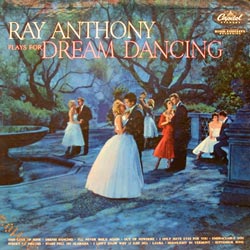
Waltz is a beautiful and graceful dance characterized by a gentle rise and fall as couples glide around the floor turning as they progress. Waltz is danced in 3/4 time with an emphasis on the one (or first beat of every measure).
Learn to Waltz in the Ballroom Sampler Group Dance Class or you can opt for private lessons.
History of Waltz
Waltz is one of the oldest partner dances still alive today. Its folk origins are said to be either Bavarian or Austrian. When the Waltz initially hit high society in the 1800s, it was scandalous due to the position of the man's hand on the woman's waist and the close proximity to the partner. Now, thanks to many ruined reputations before you, couples can dance Waltz freely without worrying about a loss of social standing.
Click to listen to Waltz music.
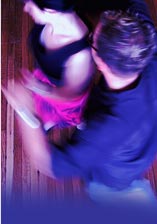 |
 |
HOME | GROUP DANCE CLASSES | PRIVATE DANCE LESSONS | DANCE STUDIO LOCATION | DANCE STUDIO PARKING | DANCE EVENTS CALENDAR | PURCHASE GIFT CERTIFICATES
DANCE PERFORMANCES | TYPES OF DANCES | MUSIC FOR DANCERS | LINKS | ABOUT THE RHYTHM ROOM | CONTACT THE RHYTHM ROOM | LEGAL & PRIVACY
Copyright 2002-2018 by Elaine Hewlett, Dallas, Texas. Site designed and maintained by Dallas web designer, Leslie Lee.